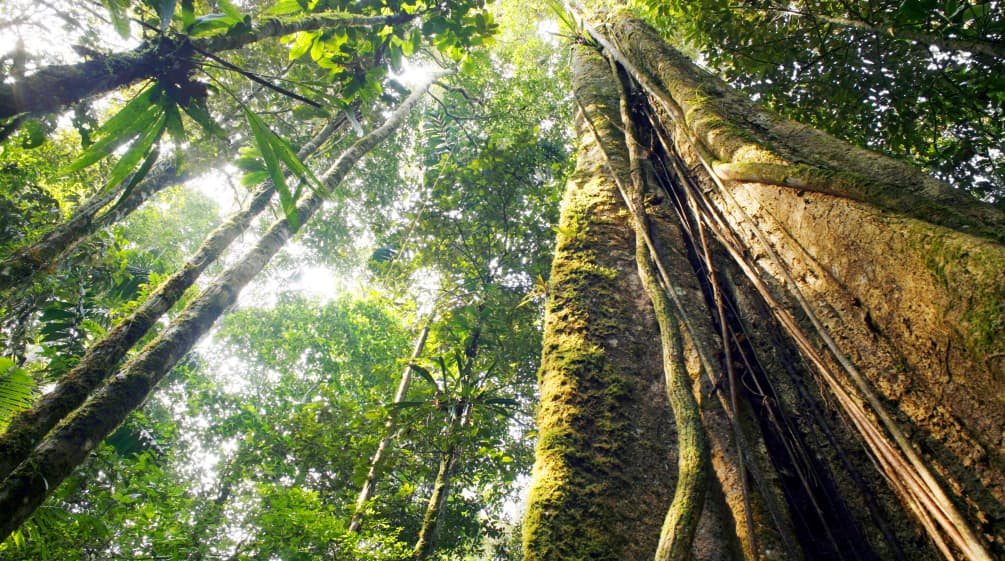The Importance of Jungles for the Earth and the Environment
Jungles, also known as tropical rainforests, are among the most vital and vibrant ecosystems on our planet. Spanning across regions near the equator, including the Amazon Basin in South America, the Congo Basin in Africa, and the Southeast Asian rainforests, these lush environments are characterized by high levels of rainfall, diverse plant species, and rich biodiversity. Jungles play an essential role in maintaining global ecological balance, contributing to atmospheric regulation, supporting a vast array of life forms, and offering invaluable resources to humanity. Despite covering only about 6% of the Earth’s surface, jungles are indispensable to the health and sustainability of the planet.
One of the most significant contributions of jungles to the environment is their role in regulating the Earth’s climate. These dense forests act as carbon sinks, absorbing vast amounts of carbon dioxide from the atmosphere and mitigating the impacts of climate change. Through the process of photosynthesis, jungle vegetation converts carbon dioxide into oxygen, producing around 20% of the world’s oxygen supply. This function is crucial in combating the greenhouse effect and maintaining atmospheric balance, making jungles a key ally in the fight against global warming.
Moreover, jungles are a treasure trove of biodiversity, housing approximately 50% of the world’s plant and animal species. This immense biodiversity includes countless species of insects, birds, mammals, reptiles, and plants, many of which are yet to be discovered or studied. The intricate web of life within jungles supports various ecological processes such as pollination, seed dispersal, and nutrient cycling, which are essential for ecosystem stability. The loss of jungle habitats due to deforestation and human encroachment poses a severe threat to global biodiversity, as many species are at risk of extinction.
In addition to their ecological significance, jungles provide numerous benefits to human societies. Indigenous communities have lived in harmony with these forests for centuries, relying on them for food, shelter, medicine, and cultural practices. Many modern medicines have been derived from jungle plants, and ongoing research continues to reveal new medicinal compounds. For instance, the rosy periwinkle, a plant native to the Madagascar rainforest, has been instrumental in developing treatments for leukemia and Hodgkin’s disease. The potential for discovering new medical breakthroughs underscores the importance of conserving these ecosystems.
Jungles also contribute to the hydrological cycle, playing a vital role in maintaining the planet’s freshwater supply. The dense vegetation of rainforests intercepts rainfall, which then seeps into the ground, replenishing aquifers and rivers. This process helps regulate water flow, prevent soil erosion, and reduce the risk of floods and droughts. Furthermore, the transpiration of jungle plants releases moisture into the atmosphere, contributing to cloud formation and precipitation patterns that are crucial for agricultural and water needs in surrounding regions.
The economic value of jungles extends beyond their ecological and medicinal contributions. They are also a source of livelihood for millions of people through activities such as sustainable logging, ecotourism, and the harvesting of non-timber forest products like fruits, nuts, and resins. Ecotourism, in particular, has emerged as a sustainable way to generate income while promoting conservation efforts. Visitors from around the world are drawn to the unique flora and fauna of jungles, providing economic incentives to preserve these habitats.
Despite their importance, jungles face numerous threats from human activities. Deforestation, driven by logging, agriculture, mining, and infrastructure development, is one of the most pressing challenges. Each year, millions of hectares of jungle are cleared, leading to habitat loss, species decline, and the disruption of ecological functions. Climate change further exacerbates these threats by altering weather patterns and increasing the frequency of extreme events such as droughts and wildfires. Addressing these challenges requires concerted global efforts to promote sustainable land use practices, enforce environmental regulations, and support conservation initiatives.
Conservation strategies must prioritize the protection and restoration of jungle ecosystems. Establishing protected areas, such as national parks and reserves, is a critical step in safeguarding biodiversity and ensuring that natural habitats remain intact. Additionally, community-based conservation programs that involve local and indigenous populations are essential. These communities possess invaluable traditional knowledge and have a vested interest in the sustainable management of their forests. Empowering them through education, resources, and legal rights can lead to more effective and equitable conservation outcomes.
International cooperation is also crucial in preserving jungles. Many tropical rainforests span national borders, requiring cross-border collaboration to address environmental challenges. Global agreements, such as the Paris Agreement, emphasize the need for countries to reduce greenhouse gas emissions and protect natural carbon sinks like jungles. Financial mechanisms, such as the Green Climate Fund, provide support to developing countries for conservation projects and sustainable development initiatives. By working together, nations can ensure the long-term survival of these critical ecosystems.
Innovative approaches to conservation are also emerging, leveraging technology to enhance monitoring and protection efforts. Satellite imagery and remote sensing technologies enable real-time tracking of deforestation and habitat changes, allowing for prompt intervention. Drones and camera traps are used to monitor wildlife populations and gather data on elusive species. These technological advancements complement traditional conservation methods, providing a more comprehensive understanding of jungle dynamics and improving the effectiveness of conservation strategies.
The legacy of jungles is not only ecological but also cultural and artistic. Throughout history, jungles have inspired countless works of art, literature, and music. The vivid and mysterious nature of these forests captivates the human imagination, serving as a muse for creativity and expression. Famous jungle paintings, such as those by Henri Rousseau, depict lush, dreamlike landscapes filled with exotic plants and animals. These artworks highlight the allure and mystique of jungles, reminding us of their intrinsic value and the need to preserve them for future generations.
In conclusion, jungles are indispensable to the health and sustainability of our planet. Their role in regulating the climate, supporting biodiversity, providing resources, and maintaining the hydrological cycle underscores their immense ecological and economic importance. Despite the numerous threats they face, concerted global efforts in conservation, sustainable management, and international cooperation offer hope for the preservation of these vital ecosystems. By valuing and protecting jungles, we ensure the survival of countless species, the well-being of human societies, and the continued inspiration drawn from these extraordinary natural landscapes.
Stay in touch to get more updates & news on Style Carter!






